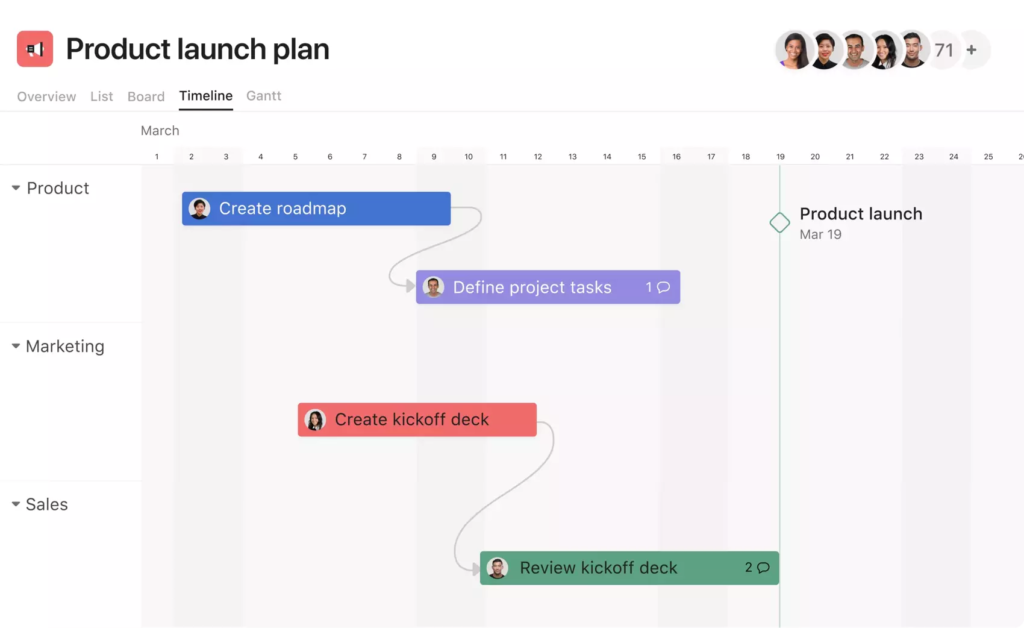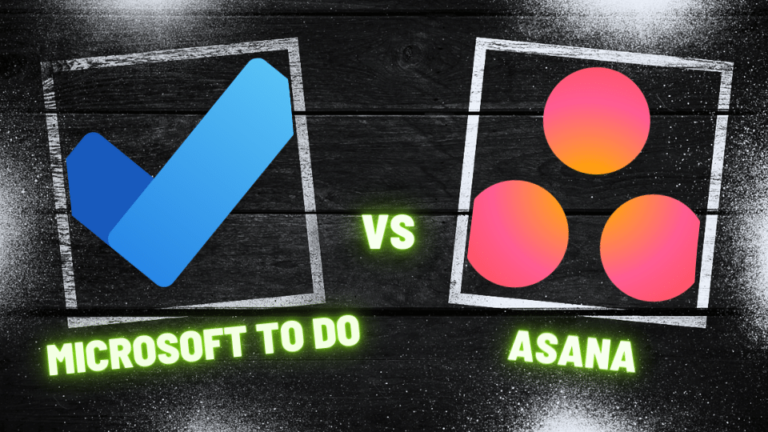What is Microsoft To Do
Microsoft To-Do is a streamlined and user-friendly task management application that integrates seamlessly with the Microsoft ecosystem. Designed to enhance productivity for both individual and professional use, MS To-Do stands out with its simple yet effective interface. It allows users to create lists, set reminders, and track tasks across various devices, ensuring accessibility and convenience. The app’s integration with Microsoft services like Outlook makes it a natural choice for users already embedded in the Microsoft environment. MS To-Do’s focus on simplicity and integration caters to those who need a straightforward, no-frills approach to task management while benefiting from the robustness of Microsoft’s technology.
Key Features of Microsoft To Do
- Task Addition: Easily add tasks and organize them in custom lists.
- Task Details: Add due dates, reminders, and files to tasks.
- Task Prioritization: Mark tasks as important for better focus.
- List Sharing and Collaboration: Share lists with others and assign tasks.
- Integration with Microsoft Tools: Seamlessly works with Outlook, Cortana, and other Microsoft applications.
- Customizable Themes and Backgrounds: Personalize the app with various themes and backgrounds for a unique user experience.
What is Asana
Asana stands out as a versatile project management tool, ideal for various team sizes. Its user-friendly interface, coupled with diverse features like task management, project visualization (including Kanban and Gantt charts), and robust team collaboration tools, makes it a top choice. Additionally, Asana’s integration capabilities with other apps enhance workflow efficiency. Offering a range of pricing plans, including a free version for smaller teams, Asana caters to a broad spectrum of organizational needs. It’s particularly recommended for its ease of use, extensive integrations, and comprehensive project management features.

Key Features of Asana
- Task Management: Asana excels in task management, allowing users to create, assign, and track tasks efficiently. This feature ensures that team members are always aware of their responsibilities and deadlines, promoting productivity and accountability.
- Project Visualization: With options like Kanban boards and Gantt charts, Asana offers versatile visualization tools. These features aid in understanding the project flow and milestones, making it easier to manage timelines and resources.
- Team Collaboration: Asana fosters seamless team collaboration. It allows for easy communication within tasks, sharing of files, and updating progress, thus keeping everyone on the same page and enhancing teamwork.
- Integration Capabilities: The platform integrates with a wide range of other applications and tools, streamlining workflows and automating processes. This integration makes it a flexible tool that can adapt to various business ecosystems.
- Customization and Reporting: Asana offers extensive customization options, including custom fields and reporting features. These allow teams to tailor their project management experience and generate insightful reports for better decision-making.
- User-Friendly Interface: The intuitive interface of Asana is designed for ease of use, making it accessible for teams regardless of their technical expertise. This simplicity ensures a smooth onboarding process and enhances overall user experience.
Microsoft To Do vs Asana: Features
| Features | Microsoft To Do | Asana |
|---|---|---|
| Integrations | Microsoft Products such as Outlook, allows external apps to connect with their API | Google Drive, Slack, Zoho Cliq, Zapier, Jira, Zoom, Toggl Track, Loom, Harvest, Gmail |
| Calendar | Not Inbuilt | Yes |
| Platforms | Windows, macOS, iOS, Android, and as a web and desktop app. | macOS, iOS, Android, Web, and Windows |
| Task Management | To-do lists, Task priorities, Subtasks, and color-coding items for organization. | Task creation and assignment, due date setting, progress tracking, project organization, tagging, comments, file attachments, task conversations |
| Natural Language Processing | Yes | Yes |
| Time Blocking | No | No |
| Analytics | No | Yes |
| Meeting Scheduler | No | No |
| Time Zones | Yes | Yes |
| Reminders | Yes | Yes |
| Customer Support | Average | Average |
| 1:1 User Onboarding | No | Asana offers customer success services including tailored training and consultation, which might include onboarding calls for new users, especially in enterprise plans |
| Pricing | Free | Asana offers three plans: the free Personal plan for basic needs, the Starter plan at $11.59 for expanded features like timeline view, and the Advanced plan at $25.69 for comprehensive project management tools including time tracking and advanced customization. |
Microsoft To Do vs Asana: Pricing
Microsoft To Do Pricing
MS To do is absolutely free.
Asana Pricing
Asana offers three main pricing tiers:
(i) Personal: This is a free plan, suitable for small teams or individuals. It includes basic project and task management features and supports collaboration with up to 10 team members. Users have access to unlimited tasks, projects, messages, and file storage.
(ii) Starter: Priced at $11.59 per user per month, this plan builds on the Personal plan. It allows collaboration with up to 500 teammates and introduces additional features like timeline and Gantt chart views, along with the ability to use forms and automation.
(iii) Advanced: At $25.69 per user per month, the Advanced plan includes all features from the lower tiers and adds functionalities such as goals, time tracking, proofing, approvals, and more advanced customization options.
Each tier offers a range of features to accommodate different needs, from individual use to more complex team collaboration and project management requirements.
Microsoft To Do vs Asana: Reviews
Microsoft To Do Review
Microsoft To Do, with its cloud-based task management, offers a range of benefits. The app allows for effective organization and prioritization of tasks and integrates well with other Microsoft services. Users appreciate the ability to customize lists and set recurring tasks. However, some limitations include the lack of rich text formatting for hyperlinks, inability to import task lists directly into Excel, and restrictions in copying tasks between lists. Despite these cons, the biggest advantage of Microsoft To Do is that it’s completely free to use.
Asana Review
Asana, a popular project management tool, is praised for its intuitive interface and robust feature set, making it an excellent choice for teams of all sizes. Key strengths include versatile project views, effective task and assignment management, and smooth team collaboration. Users benefit from a variety of project views like Kanban Board, Timeline, and Gantt, alongside templates for quick project setup. Asana’s progress tracking and integration with various tools like Google Suite and Microsoft 365 further enhance its utility. However, the tool’s complexity might be overwhelming for beginners, and the cost of the Advanced package may be a concern for smaller teams or individual users.
Which One Should You Pick
Consider Microsoft To Do if
- You’re in the Microsoft Ecosystem: It integrates well with Office 365 services, but might not be the best standalone option for those not using other Microsoft products.
- You Value Simplicity in Task Management: While it’s easy to use for basic task lists and reminders, it may lack advanced features found in more comphensive task managers.
- You Prefer Free Tools: Microsoft To Do is free, making it accessible, but it might not offer the depth of paid apps in terms of features and customization.
Consider Asana if
- You’re Managing Diverse Projects: Asana is suitable for various project types, offering flexibility with multiple view options like Kanban and Gantt charts. However, it might take time to master all the features.
- You Value Integration: Asana’s integration with many tools (like Google Suite, Microsoft 365) enhances its utility. But, be mindful that depending on external apps could complicate workflows.
- You Prioritize Team Collaboration: Asana is strong in team collaboration features, making it easy to track responsibilities and updates. Still, for very small teams or individual use, the platform might offer more than needed.
Best Microsoft To Do and Asana Alternatives
- Akiflow: Akiflow is a time management app offering time blocking, task scheduling, and integrations with various tools. It focuses on productivity and organization through a unified task and appointment interface.
Akiflow Price: $19 per month, paid annually - Google Tasks: Google Tasks is a task management app, allowing users to create, manage, and prioritize tasks directly from their smartphone.This app is particularly useful for those already embedded in the Google ecosystem, providing a synchronized task management experience across devices.
Google Tasks Price: Free - TickTick: TickTick is an all-in-one task management and reminder app, offering features like task organization, habit tracking, and calendar views. It’s designed for personal and work use, facilitating productivity with its user-friendly interface and cross-platform compatibility. TickTick also includes collaboration tools for team projects.
TickTick Price: $3 per month, paid annually

Best Time Blocking Web and Desktop Apps, 2024
Explore the best time blocking apps of 2024! Discover how Akiflow, TickTick, Usemotion, Sunsama, Sortedapp, and TimeHero revolutionize productivity, offering unique features for professionals and students to manage tasks and enhance efficiency.

Improve Focus: 5 ADHD Productivity Tools & Calendar Apps for 2023
Discover five of the best apps and tools for those with ADHD, from note-taking apps to time-blocking platforms. Get ready to stay organised, motivated and on track with Akiflow’s essential guide.

The Top 3 Todoist Alternatives (In-Depth Review)
Over 25 million people now use Todoist to stay on track and plan their day. It has expanded rapidly and is now a widely used task manager with seamless integrations into other task and calendar managers like Akiflow. While Todoist is hugely popular among its wide user base, there are now a variety of Todoist […]

